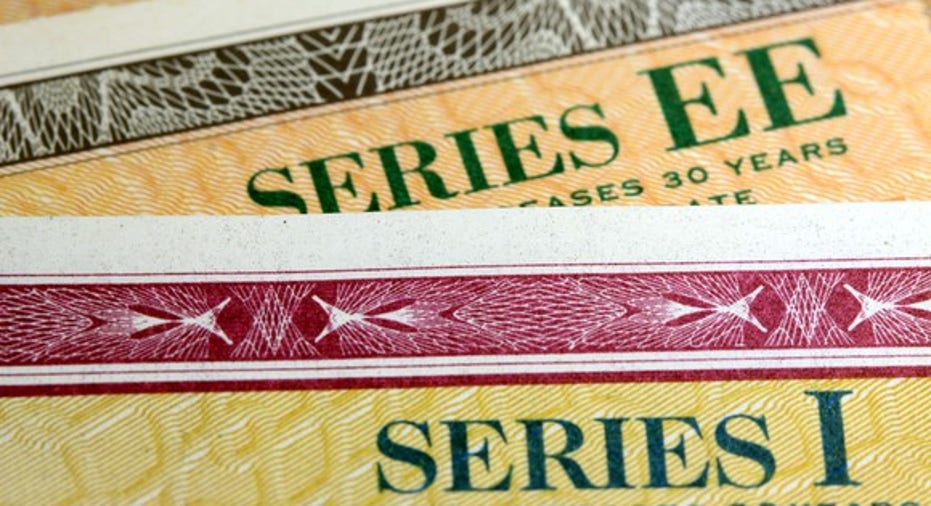How Ugly Can the Bond Rout Get?

The beauty of bonds comes from the predictability of their payment schedules. That predictability is maintained through the threat of default; if the bond payer doesn't pay on schedule, the bond holder has recourse that often includes taking control of the defaulting bondissuer. The downside of that predictability is that when interest rates rise, it automatically translates to lower prices of existing fixed-rate bonds. If rates rise enough from a low enough level, it can lead to an ugly rout in existing bonds.
Image source: Getty Images.
With recent interest rates at generational lows, the Federal Reserve resuming increases to short-term rates, and longer-term rates already ticking up over the past few months, rates are trending upwards. With inflation expectations also on the rise, that provides additional ammunition for even higher rates to come, as lenders generally attempt to stay ahead of inflation when they loan out money.
How much do bonds move when rates change?
The reason bonds move based on interest rate changes is simple. If an investor is looking to buy a bond, that investor knows the expected payment schedule of that bond. If two similarly risky bonds with similar maturity dates and coupon payment schedules are available and one pays more in interest than the other, the higher-paying bond will be worth more to the investor. Bond prices adjust to ensure the bond with the lower coupon interest payment remains an attractive alternative to the investor.
The formula that estimates how much a bond's price will change from a 1-percentage point change in interest rates is known as the Modified Duration formula. The math can be somewhat complex, but most spreadsheets have a built-in formula to calculate it for you if you feed it a few key numbers.
The numbers you'll need to put into the formula include:
- The Settlement Date -- the date the bond must be delivered to the buyer and the buyer is required to turn over the cash for a purchase.
- The Maturity Date -- the date the bond is scheduled to be redeemed for face value at the end of its term.
- The Coupon Yield -- the annual interest rate the bond would pay if you purchased it at exactly its face value.
- The Current Yield -- the annual interest rate the bond pays at its current market price.
- The Payment Frequency -- the number of interest payments the bond makes each year.
The bad news is where the pain will be felt
As a general rule, higher-quality bonds have higher modified durations than lower-quality bonds (due to having lower coupon rates). Additionally, bonds with longer time to live have higher modified durations than ones that mature soon.
The table below shows a list of high-quality -- AA rated or better -- long-term bonds and their modified durations. As you can see, a single percentage point rise in interest rates will knock the value of each and every one of them down by more than 15% -- to as much as nearly 20% for the Treasury bonds.
Table by the author based on data from Scottrade's bond center and U.S. Treasury Direct, as of Dec. 23, 2016. Listed bonds pay interest 2 times per year, and calculations are based on a Dec. 26, 2016 settlement.
These are all high-quality companies or government debt issuers, all of which are likely to be able to pay back their bonds when they mature and make their interest payments along the way. Their bonds still retain the relative safety of a high likelihood of knowing when the payments will be made, but in a rising rate environment, even that safety can't prevent the prices of existing bonds from tumbling.
What you can do about it
Despite the risk of lower prices in a rising rate environment, the higher certainty of bond payments makes them a useful tool for retirees and others that need money at known dates in the future. To get the benefit of owning bonds while minimizing the risks of price fluctuations, you should duration-match your bonds to when you need the money.
In other words, if you need $10,000 in spending money in two years, buy high-quality bonds that will mature for $10,000 at about the time you'll need the cash. That way, you'll get the bond-level higher certainty that the money will be there when you need it, along with what will likely be better than savings account interest payments along the way. You'll still face the market's fluctuations along the way, but you can expect to be made whole at maturity.
The $15,834 Social Security bonus most retirees completely overlook If you're like most Americans, you're a few years (or more) behind on your retirement savings. But a handful of little-known "Social Security secrets" could help ensure a boost in your retirement income. For example: One easy trick could pay you as much as $15,834 more...each year! Once you learn how to maximize your Social Security benefits, we think you could retire confidently with the peace of mind we're all after.Simply click here to discover how to learn more about these strategies.
Chuck Saletta owns shares of General Electric and Microsoft. The Motley Fool owns shares of General Electric. The Motley Fool recommends Coca-Cola. Try any of our Foolish newsletter services free for 30 days. We Fools may not all hold the same opinions, but we all believe that considering a diverse range of insights makes us better investors. The Motley Fool has a disclosure policy.



















